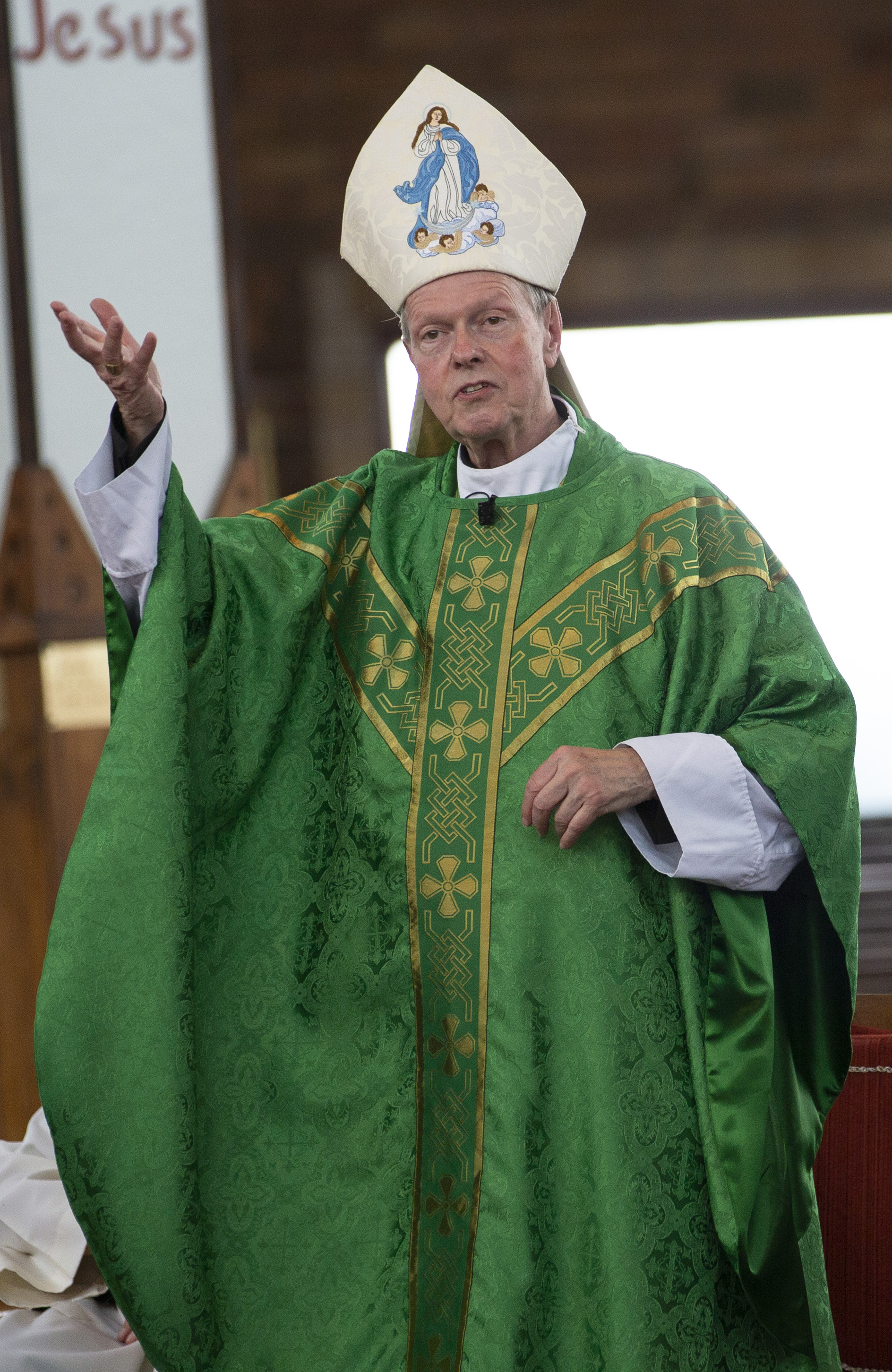August 26, 2021 at 12:40 a.m.
Faith is certainly a way of seeing. It changes lives and it changes perspectives. It even changes how we love and see love. We see what it did for St.
Paul. When one has had a conversion experience, seeing the world through Christ, there is no turning back.
Last Sunday — if the homilist addressed the long form of the reading (Ephesians 5:21-32) — you may have felt that, for all best efforts, it was not possible to explain away a seeming misogyny on the part of the author. The passage where Paul says, “wives should be subordinate to their husbands,” taken out of context, has doubtless been cited by any number of malfeasants, male supremacists, or worse, to justify the subjugation of women, even tolerance of domestic violence. Remember, the Devil can quote scripture to his advantage.
It is true that these words may sound misguided, hurtful, perhaps unredeemable. Why did St. Paul even attempt to weigh in on the institution of marriage? Could he have not left well enough alone? Well, the problem is, marriage was not in a very “well enough” state in the Roman world he lived in. Even though, as an observant Pharisee prior to his conversion, he would have adhered to biblical vision — “God created mankind in his image; in the image of God he created them; male and female he created them” (Genesis 1:27) — which clearly proclaimed human equality, does it not seem in this passage that he was more conditioned culturally by the pagan power structures that regarded women, children and slaves as inferior?
Certainly, that was the cultural context he lived in. The paterfamilias — usually the eldest male in the Roman legal familial structure — had almost complete control and dominance over all in his household, with authority even to dispose of the lives of his children. The Romans thought that domestic matters were not amenable to governance by the state and took a legal approach not different from those today who view pregnancy a purely private matter. In that view, an unborn child, for example, is essentially the property of the mother hosting the child within her body. Whether by the fiction (no longer defensible under scientific analysis) that the unborn is a part or extension of her body, or based on legal/philosophical theory of a freedom or right superior to the right to life of the unborn — as argued by some libertarians and legal authorities — the constitutional challenges continue to mount.
Slavery, human trafficking and domestic violence remain quite rampant worldwide. We are seeing how in Afghanistan recently, women, and religious and political nonconformists, are being treated with fierce brutality. No doubt St. Paul observed similar behaviors and was seeking ways of Christianizing marriage customs of his time. He probably realized he could not completely change the culture, but he was at least attempting to temper its excesses.
His reference point, he makes clear at the start of his discourse, is the relationship between Christ and his Church. He sees in that image, a model for the reform of married life in which the partners treat each other with love and respect, united in a common life in which they regard each other as members of the same body. His analogy may not prove entirely successful. He admits that “(t)his is a great mystery, but I speak in reference to Christ and his church” (Eph 5:32). In other words, he is arguing as a pastor, and theologically, not as a social reformer. He clearly wants Christian married couples to pattern their lives after Jesus and his Church, not the pagan standards, prevalent at the time. Perhaps he did not go far enough.
Even after two thousand years, theological development on how marriage as a sacrament reflects and reveals the reality of the God-love after which it is patterned, remains a vast open field for theological and spiritual reflection. That is to say, there remains much to be discovered and articulated from the experience of Catholic married couples and others reflecting on this mystery, to bring out the reality of the depth and breadth of this sacred union.
On its most fundamental level, the loving, faithful and life-long union of two partners, different yet equal, and from whose union other human beings are conceived and raised, is a powerful human reflection of the Trinitarian essence of divine life, of the true meaning of love. St. Paul chose to begin with his vision of marriage as patterned after the incarnate Word and his union with the Church, the people of God. It is only a beginning, an inspiration, a vision to be lived.
Christians have a view of humankind that respects the value, uniqueness and equality of every human person in the eyes of God. So no form of subordination or subservience to another human being is consistent with this view — unless it is voluntary and patterned after the obedience of Christ to the Father in his life and love poured out in his Church. Love always serves the good of the beloved. St. Paul begins his discourse with this: “Be subordinate to one another out of reverence for Christ” (Eph 5: 21). The emphasis is on mutuality and reverence.
Our own culture tends to view marriage as exclusively a matter of choice between any two individuals about what they want it to be between just the two of them. That by its nature sexual intimacy leads to the generation of other human beings is regarded as optional, non-essential, unrelated to their physical and emotional bond. In fact, even the choice to be a parent is itself regarded more as an individual option, not necessarily related to mutual love and commitment of two parents. The child is more of a reward or a desired possession of the parent who wants it — not necessarily the fruit of the mutual love of both parents. This tendency to deconstruct the natural components of a conjugal union certainly rubs against Christian sensibilities about the life-giving nature of love, that flows outward beyond the bonding of the two, to create a life beyond itself, even greater than the two. Such is a
consequence and reflection of being created in the image of God, a Trinity of Persons.
The day may come when a new generation of Christians looks back on our times, puzzled by our inability to think outside the strictures of our current forms of paganism, just as we might criticize Paul for not going far enough to distance himself from his own pagan cultural influences. Is it ever too much for us to ask ourselves, how far are we willing to go with Jesus, how ready are we to expand our vision of what love really is, always much more than the limits we place on it? Are we willing to challenge our culture, or just be subservient to it?
Follow Bishop Ed on Facebook at facebook.com/AlbanyBishopEd and Twitter @AlbBishopEd
SOCIAL MEDIA
OSV NEWS
- Archdiocese of St. Louis files to dismiss abuse charges, citing state law, case precedent
- Why do we baptize infants, and why was Jesus baptized?
- Full text: Pope Leo XIV’s homily at morning Mass of the Extraordinary Consistory, Jan. 8, 2026
- Archbishop Hebda calls for prayers after woman shot dead by ICE officer in Minneapolis
- ‘I am here to listen’ Pope Leo tells cardinals at start of consistory
- Slain state trooper, beloved and mourned by Delaware Catholics, laid to rest
- ‘You are not alone,’ Latin American, Caribbean bishops tell Venezuelan people
- Full text: Pope Leo XIV’s opening address at the Extraordinary Consistory, Jan. 7, 2026
- Pope Leo calls on Catholics to rediscover Vatican II teachings
- Church must stand for peace, says Greenland priest, as US eyes takeover








Comments:
You must login to comment.